Today we are going to talk about the first 5 phonological developmental phonological processes. These are Reduplication, Denasalization, Assimilation, Final Consonant Deletion, and Final Consonant Devoicing. These developmental phonological processes should be resolved by the time a toddler turns 3.
Before we get started, be sure to check out the first post in this series about important terminology and FAQ’s!
Reduplication
Reduplication occurs when a toddler repeats a complete syllable for a word. It resembles babbling, however, they are not the same thing.
Reduplication begins as toddlers’ speech skills become more coordinated following the 5 stages of phonation during infancy; more specifically, canonical babbling and variegated babbling. It is also a direct result of developing language skills and cognitive development.
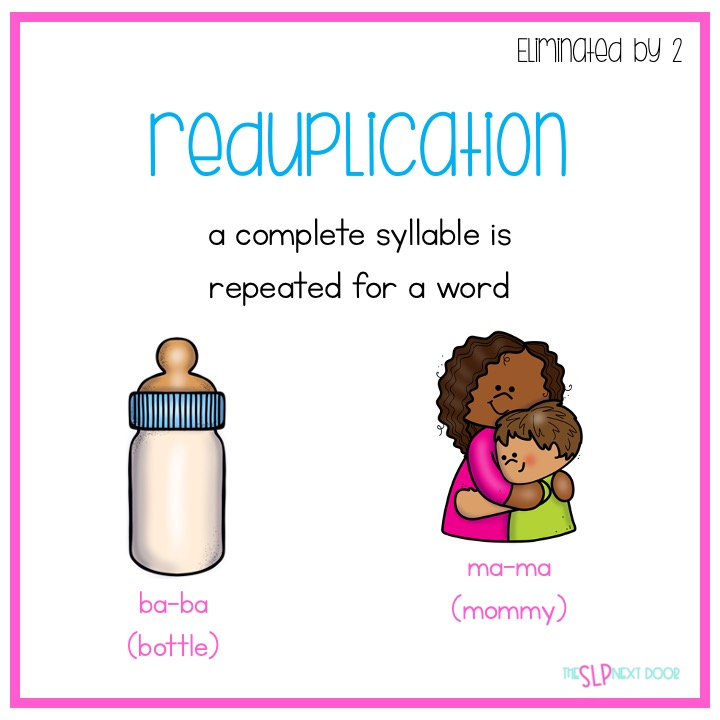
What’s the difference? Babbling occurs when babies explore their ability to communicate and create different sound combinations. Reduplication is intentional; toddlers are able to apply a specific meaning to an object and label the object. Toddlers progress through this phase of early speech development quickly and should not use reduplication (for every word) by the time they are 2 years old.
Denasalization
Denasalization occurs when a toddler replaces a nasal consonant (m, n, ng) with a non-nasal consonant.
A nasal consonant is a phoneme produced when air resonates through the nasal cavity. These phonemes include m, n, & ng.
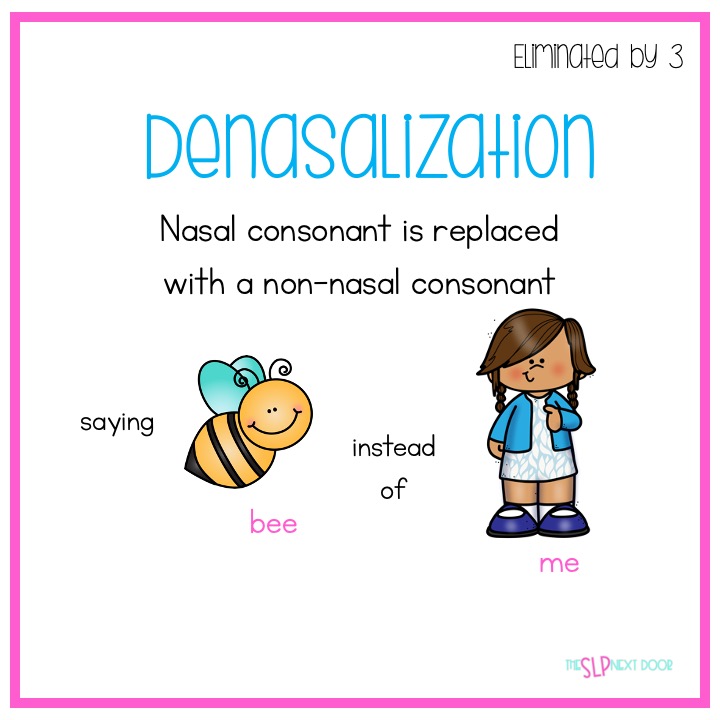
Let’s get a better perspective on this, say: mmm, nnnn, ng. By practicing those sounds, you can feel how they are produced. Everything is closed off and air bounces throughout the cavity creating the sound. This is why when an individual presents with a cleft palate they often experience difficulty with these sounds. They are unable to close the oral cavity completely. These errors may continue to present intermittently as toddler development continues nasals are a more complicated sound to make.
Assimilation
Assimilation occurs when one consonant sound in a word sounds like another sound in the word.
An example of this is when a toddler says “lello” for yellow or “bub” for “bus”
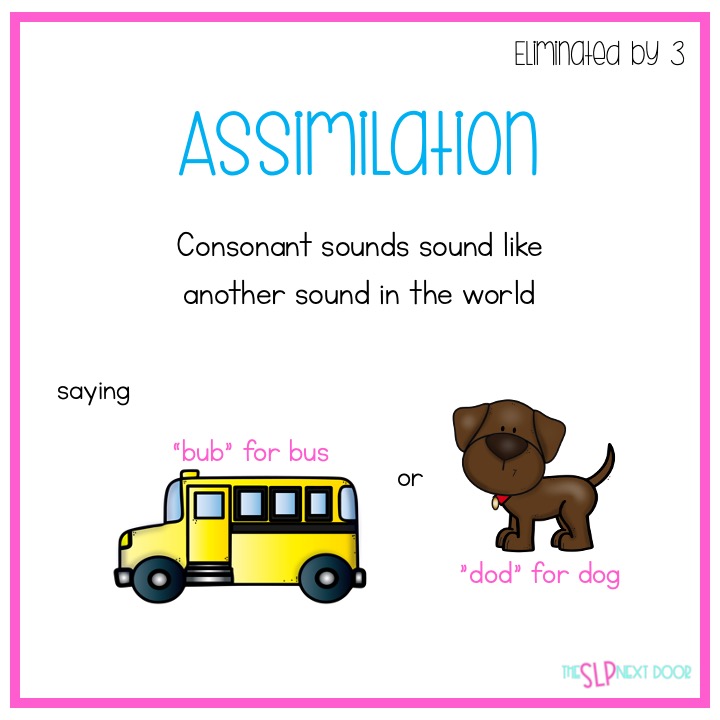
The answer to your question is yes- assimilation is also a category of its own for later phonological error patterns. (I know… it’s complicated🙃) Sometimes this process may continue to show up in some words until a toddler is able to produce the later-developing consonant sounds. The distinguishing factor in this is that toddlers begin to transition from simplifying by using the same consonants in words.
Final Consonant Deletion
Final Consonant Deletion occurs when the toddler omits the final consonant sound in a word.
For example: “ca” for “cat” or “bu” for “bus”
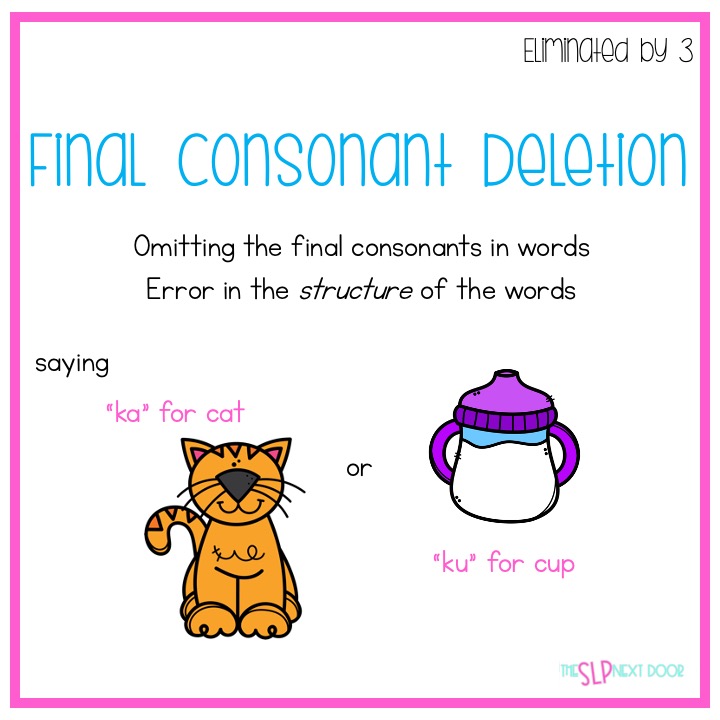
Here’s a quick note about this specific phonological process. It is an error in word structure. So when you are treating a toddler or child for final consonant deletion, you’re going to want them to begin by adding a consonant sound to the end of the word. Sometimes this becomes assimilation (bub for bus) but that’s okay because you want them to structure the word correctly before you correct the sound.
So if you have a toddler that is presenting with a lot of structure errors, your main focus should be building word structure before moving on to correct sound production. (this is something that isn’t really talked about a whole lot- but is super important when it comes to phonological disorders)
Final Consonant Devoicing
Final Consonant Devoicing occurs when a sound typically voiced is replaced with an unvoiced sound at the end of the word.
Example: “pik” for “pig”
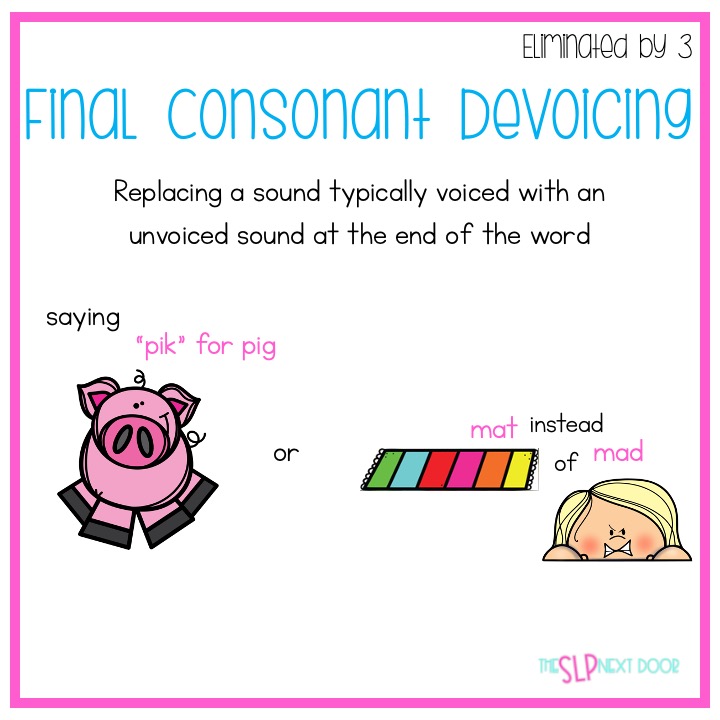
Voiced vs De-Voiced Consonants: Voiced Consonants: vocal cords vibrate and create noise. De-Voiced Consonants(voiceless consonants): air passes through the vocal chord and no sound is created (they are also called voiceless consonants).
Let’s Summarize
Toddler speech should become more intelligible as they develop:
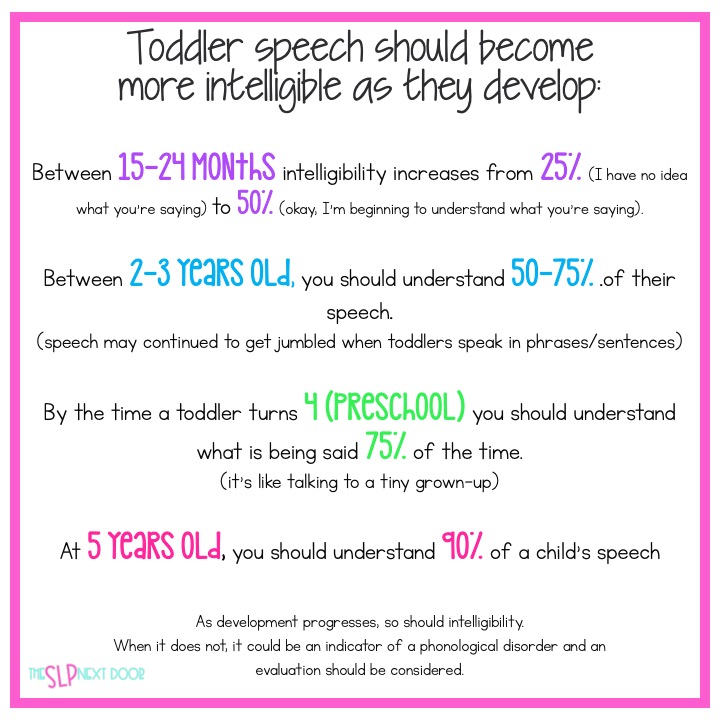
This is often why we get the referral in the first place, right? We need to be able to determine where the problem is occurring. Understanding the developmental aspect of phonological processes helps determine where to start.
These are the phonological processes by 3..but what about the rest of early speech development? What happens between 3 and 4? I’ll be popping into your inbox early next week to talk about those developmental processes: stopping, fronting, cluster reduction, and weak syllable deletion!
P.S. Don’t forget! My phonology bundle was created just for our early communicators. Start from the most simplistic form of words (CV, VC) and work all the way to words with multiple syllables (up to 5 syllable words!). All in one resource! Recently updated, this bundle now offers: interactive books, coloring pages, dauber dot pages for multiple productions, word building activities, visuals, and so much more!

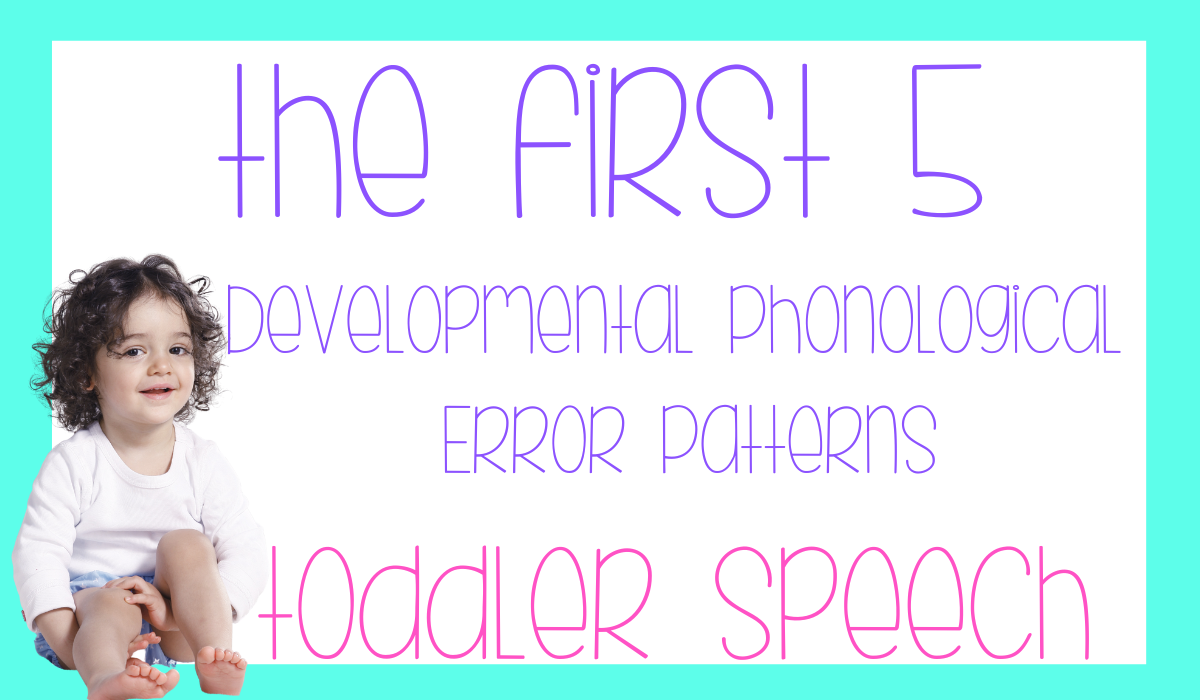
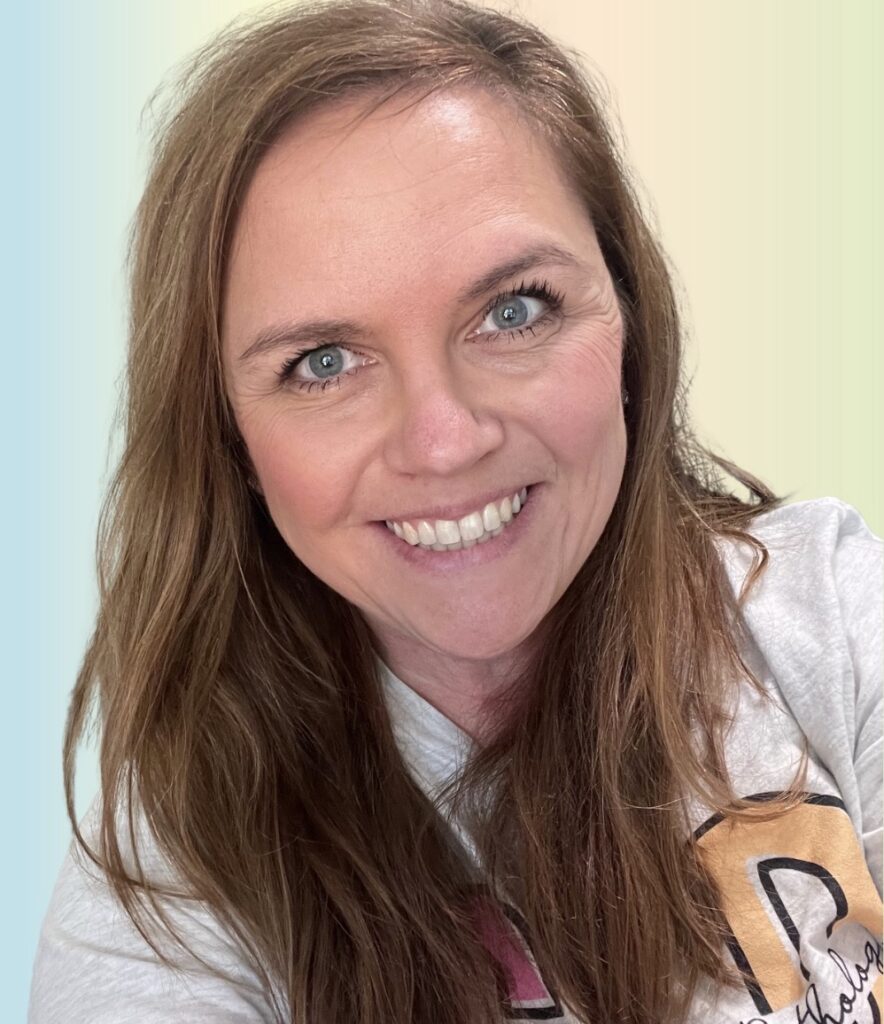
7 Responses